SHOULDER INJURY PREVENTION: PART 3
SHOULDER INJURY PREVENTION: PART 3
By Brandon Penas, PT
Shoulder Strengthening for the Overhead Athlete
The stability of the shoulder (glenohumeral) joint is primarily derived from the four rotator cuff muscles, which are: Supraspinatus, Infraspinatus, Teres Minor (Picture 1), and Subscapularis (Picture 2). In the overhead athlete, this group of muscles must work in harmony and with precision in order to compress and stabilize the head of the humerus (head of upper arm bone) in the glenoid fossa (shoulder socket) while the shoulder is moving in multiple positions. Moreover, the rotator cuff provides a counterforce to humeral head superior translation (humerus moving upward) caused by deltoid muscle activity.

Lower Half Mechanics
Inefficient dynamic stabilization of the shoulder joint will, more than likely, lead to some form of shoulder injury over time. A proper strengthening and conditioning program for these specific muscles should be prescribed and implemented in all seasons in order to reduce the risk of injury. The following exercises are specifically designed to strengthen the rotator cuff as well as the upper, middle, and lower trapezius (not discussed in detail in this article). You will find the exercises under the muscle they are designed to strengthen.
Supraspinatus
Full Can Exercise
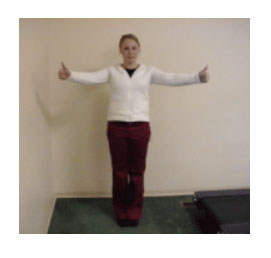
Primary Rules: Starting at the pelvis, raise the arm to shoulder level keeping your thumbs pointing upward. Do not allow the shoulder to shrug upward during any part of this exercise.
Prone Full Can Exercise
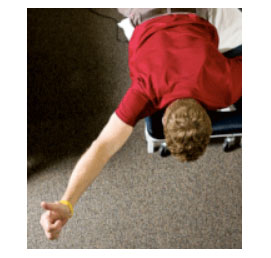
Primary Rules: Place a pillow underneath your hips to help protect your back. Look at the ground to protect your neck. Keep your shoulders from rising up towards your ears. Concentrate on squeezing your scapulas together.
Infraspinatus and Teres Minor
Side-lying External Rotation
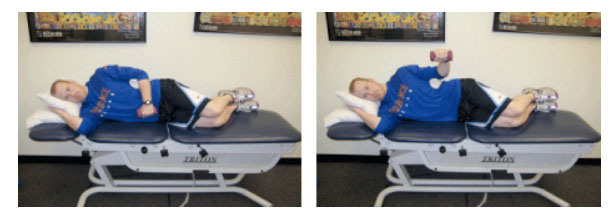
Position 1: Squeeze towel roll down with elbow and keep elbow at 90 degrees at all times.
Position 2: Slowly lift hand while squeezing towel roll and not moving the shoulder backwards.
External Rotation
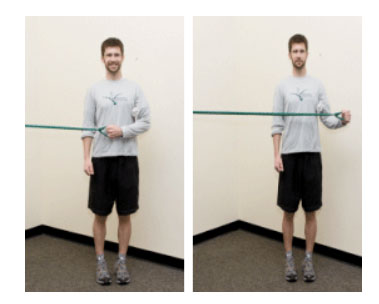
Primary Rules: Keep elbow at 90 degrees at all times during the above exercises. Always place a small towel roll between the arm and body just above the elbow.
Subscapularis
Standing Internal Rotation at 0 Degrees
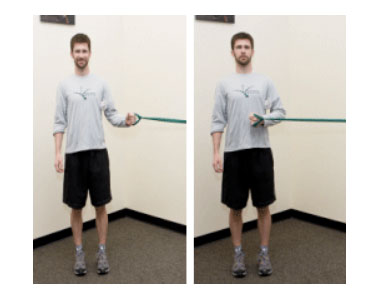
Lower Trapezius
Prone Full Can

Primary Rules: Place a pillow underneath your hips to help protect your back. Look at the ground to protect your neck. Keep your shoulders from rising up towards your ears. Concentrate on squeezing your scapulas together.
Middle Trapezius
Prone Full Can Horizontal Abduction at 90 degrees

Primary Rules: Follow same rules with prone empty can exercise.
Prone Row
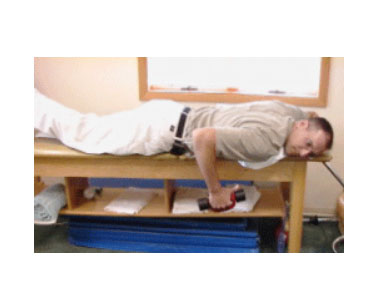
Primary Rules: Start with the arm at/near the floor, raise the arm up by bending at the elbow until the upper arm is level with the upper body and then return to starting position.

When strengthening the rotator cuff musculature, it is less important to perform the exercises to fatigue. Teyhen et al. published a research article in 2008 that assessed superior humeral head migration before and after rotator cuff fatigue (fatigue = 40% reduction in rotator cuff strength). At a 40% reduction in rotator cuff strength, the humeral head migrated superiorly by 0.79mm during shoulder elevation, which reduced the subacromial space (space the supraspinatus tendon travels through) up to 40% in healthy individuals (Teyhen, et. al, 2008). This level of fatigue diminishes the rotator cuff’s ability to dynamically stabilize the shoulder joint, thus putting the shoulder joint at risk for injury.
Guidelines/Recommendations for Exercise Implementation
Overhead athletes (especially pitchers) should perform rotator cuff exercises 3x/week during pre-season and in-season to maintain proper muscle strength and endurance, 1-2x/week during the off-season. Perform 2-3 sets of 15-20 repetitions per exercise unless technique/form is compromised. Performing these exercises independent of your sport-specific workout is ideal to ensure proper form and reduce the chance of generalized shoulder fatigue and muscle substitution. Quality not quantity is key!
For more information regarding this article, you can contact me via email at brandon@endurancerehab.com.
References
- Deydre S.Teyhen, PhD, PT, OCS; Joseph M. Miller, MPT, PT; Tansy R. Middag, DPT; Edward J. Kane, PhD, PT, ECS, ATC. Rotator Cuff Fatigue and Glenohumeral Kinematics in Participants Without Shoulder Dysfunction. Journal of Athletic Training 2008;43(4):352-358.
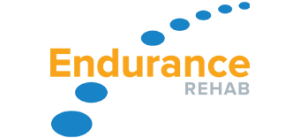



Leave a Reply
Want to join the discussion?Feel free to contribute!